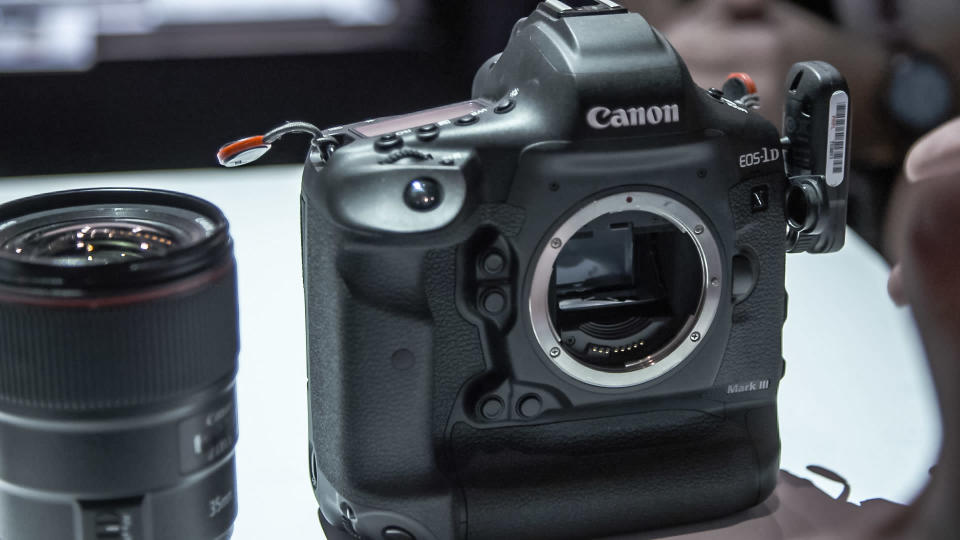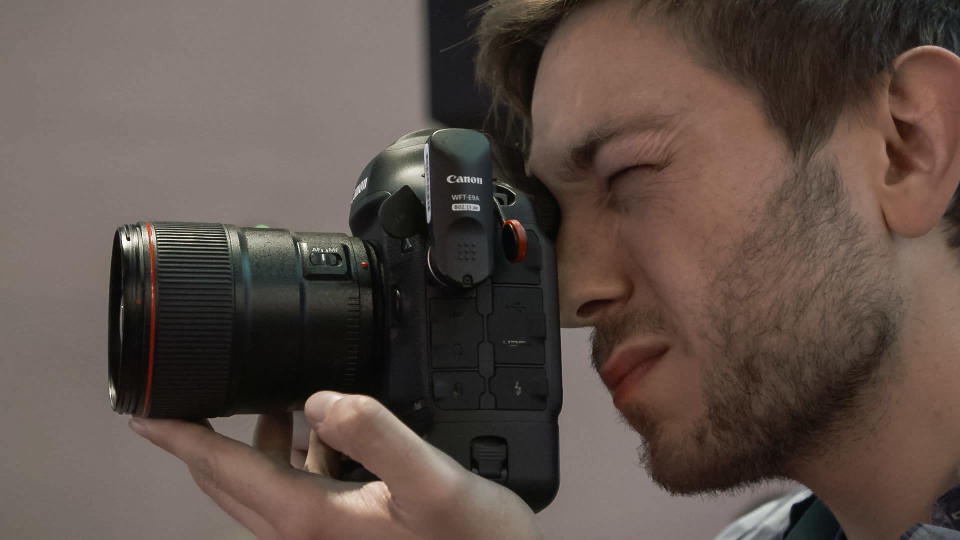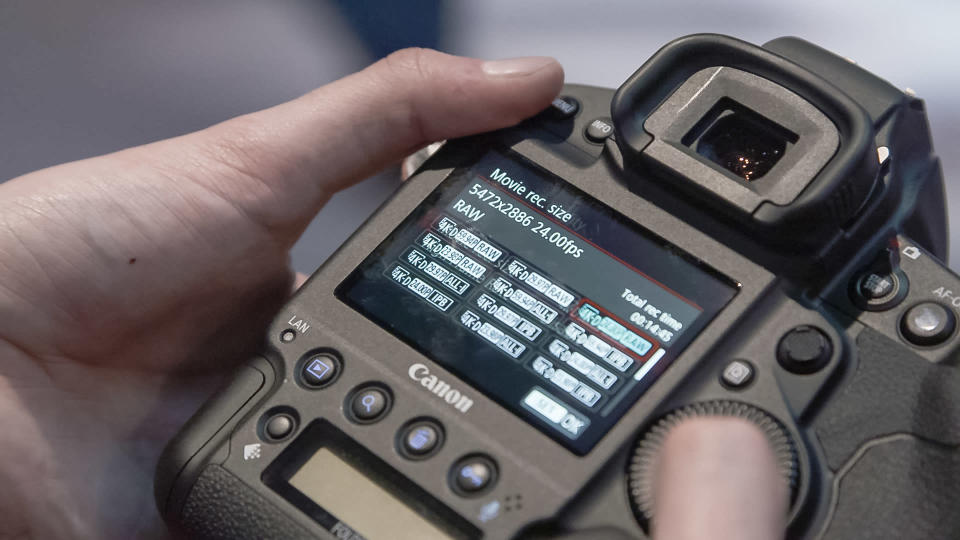Engadget has been testing and reviewing consumer tech since 2004. Our stories may include affiliate links; if you buy something through a link, we may earn a commission. Read more about how we evaluate products.
Canon's ultimate photo camera is also a video powerhouse
The 1DX MIII is an incredible photo camera, but also packs 5.5k raw video.
All the current camera hype may be around mirrorless cameras, but Canon is determined to prove DSLRs aren't dead. With the new 1DX MIII, Canon has created what might be not only the best photo camera for sports, news and wildlife, but also an exceptional video camera.
First things, this is a giant DLSR. If you're used to nice compact mirrorless cameras, a pro camera like the 1DX or Nikon D5 feels enormous. For one, with its second grip (complete with control wheels), and a shutter built so you can swap to portrait orientation, the camera's body is almost square.

The bulk isn't without purpose, though. The 1DX series is built with durability, reliability, accuracy and speed in mind. The 20.1-megapixel sensor isn't winning any resolution contests, but this modest number helps it deliver a blistering 16fps shooting speed through the viewfinder. The experience of actually using that fast of a burst though is a little unsettling -- the camera sounds like a jackhammer and shook in my hands while I rattled through a hundred or more images. But, the speed is astounding. If you lock the mirror up and frame through the rear LCD instead, you can get a totally silent 20fps. This feels unnatural for entirely the opposite reason: the camera stays dead quiet, the only indication it's actually working the ballooning on-screen capture count.
With the mirror up or down, even at these speeds the 1DX MIII is still capable of autofocus tracking. In my brief time with the camera, the focus system was seriously impressive, locking on to faces or objects and following them through the scene, even when they were briefly obscured by foreground objects or people walking through my shot. This mode works equally well in video, letting you follow a subject or even circle them while maintaining perfect focus.

The system is also intuitive to control. The camera's "Autofocus on" button, which engages the focus, is also a touch pad, and can be used to shift the focal point around the screen. This is similar to the touch bar on Canon's EOS R camera, with the main difference being that I didn't immediately hate it and the camera the first time I tried to use it. As opposed to that cursed bit of UI, the touch surface here felt intuitive: a small thumb slide moved the focal point where I wanted it, and a click engaged the focus motor.
The autofocus system is also endlessly customizable, with almost every feature able to be tweaked, from how quickly the camera moves focus, to how likely it is to switch subjects. There's also an "auto" mode that lets the camera pick the behavior it thinks is best. My only complaint is that, while single-point focus worked and tracked like magic, when I enabled whole-scene autofocus, a few times it tried to track the wrong thing, or at least, not the thing I wanted to focus on.

Canon may have helped pioneer DSLR video with the 5D series, but its last few models have delivered lackluster video features. This may have been to avoid competition with its C line of cinema cameras, but whatever the reason, when it comes to options for high resolution, frame rate, or video quality, Canon's recent cameras have disappointed. Its solution? To give the 1DX every video option imaginable. Internally, this camera can capture 12-bit 5.5K raw at 2,600Mbit/sec, or much more reasonable editing-friendly 10-bit 4k intra-frame video at up to 60FPS and 1,000Mbit/sec. The one potential downside is you need to use their low-contrast CLog picture profile for these shooting modes, if you want something that'll look good straight out of the camera you need to drop down to 8-bit video, though that's still on par with what something like the Sony A7R IV shoots.

In terms of competition, there's nothing else quite like the 1DX MIII. As long as you don't need high-res images, Canon has created what, on paper at least, is arguably the best photo camera around, and then bolted on a raft of cinema-worthy features for good measure. Sony's A9 II shoots as fast at 20 FPS and also has fantastic autofocus, but it's stuck with 8 bit video and lacks log profiles. The Sony A7R IV is higher res for photos, but much slower at 9 FPS. The Blackmagic Pocket Cinema Camera 6K can nearly match the 1DX MIII for video specs, but is a lousy photo camera with barely functional autofocus. Similar is the Panasonic S1H, which comes close with video capabilities, including a much-coveted Netflix certification (which I expect the 1DX MIII will also receive) but lacks raw video options and is a perfectly fine but less than top-tier photo camera, especially when it comes to autofocus.
Nikon's Z6 and Z7 are highly capable cameras that can be upgraded to record raw video, but only via HDMI and an external recorder. Still, they may be the closest competition, and we still don't know the capabilities of Nikon's upcoming D6, which is rumored to have it's own raw video capabilities plus the in-body stabilization, the one feature the 1DX MIII lacks.
There is currently no single device that can do what the 1DX MIII can do, but you'll have to pay a price for all these features, $6,500 to be specific. For that money you could get a Blackmagic Pocket Cinema Camera and a decent photo camera, and still have money left over for a lens or two. Still, if you want one camera that can handle almost any situation, there's nothing else quite like the 1DX MIII

 Yahoo Lifestyle
Yahoo Lifestyle 